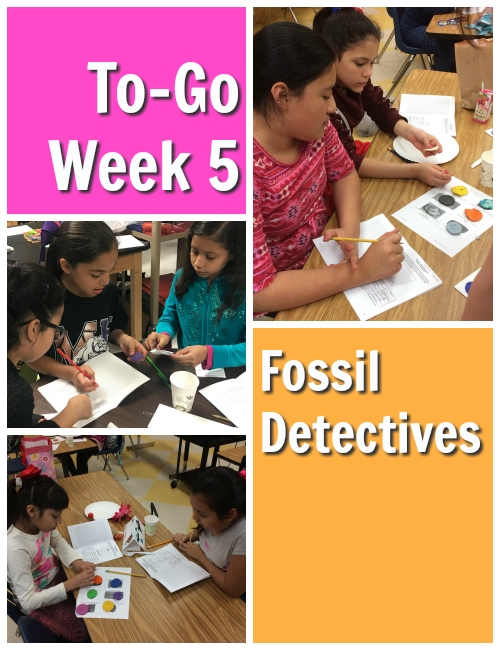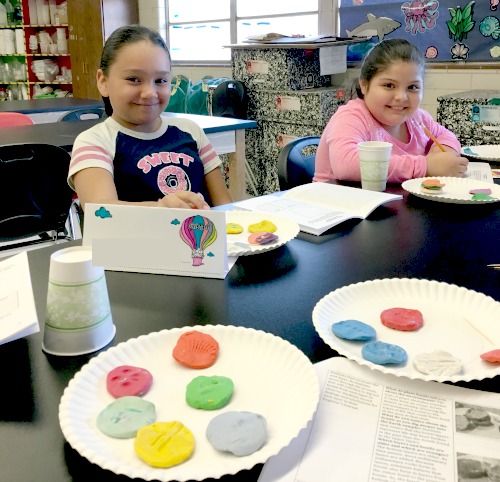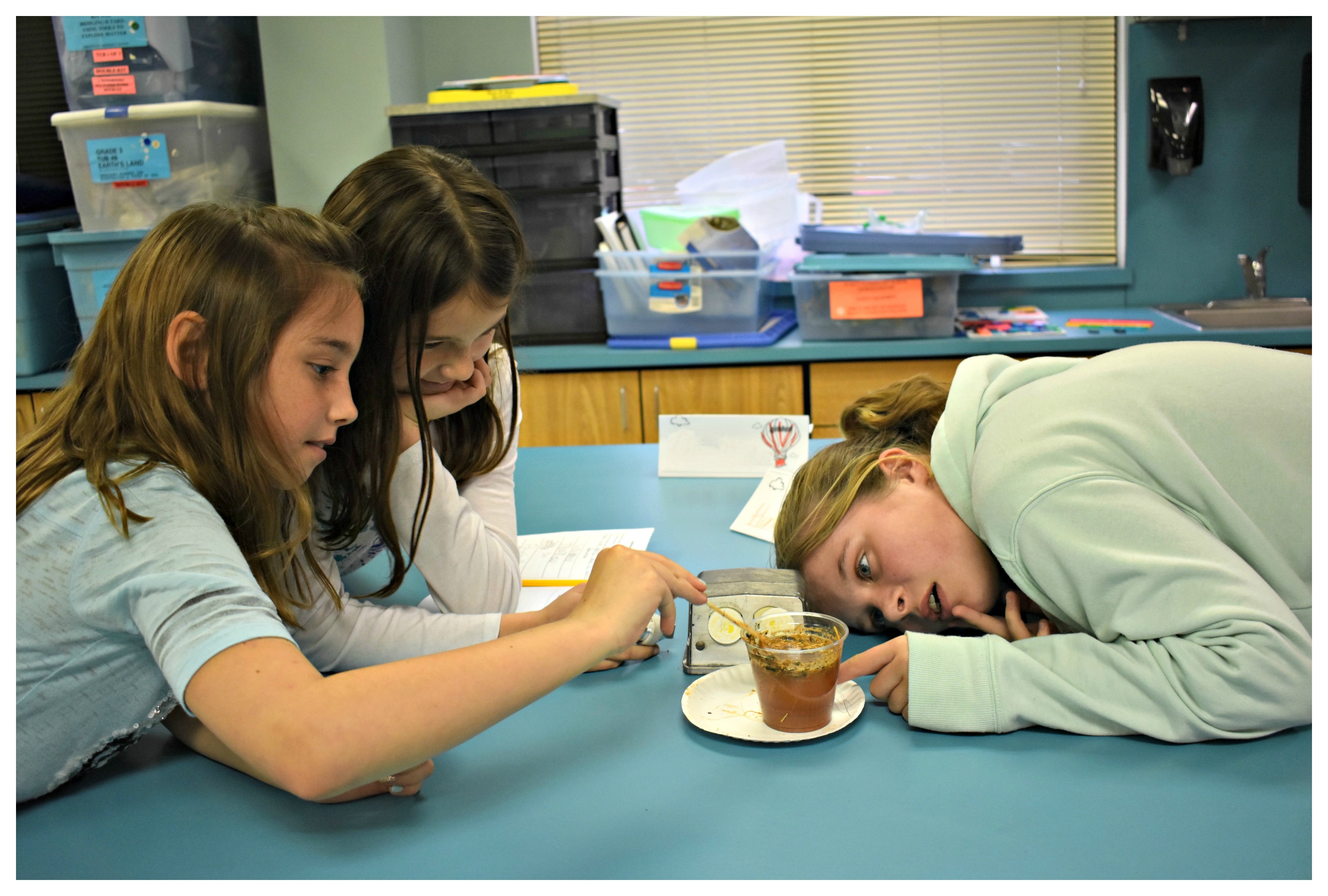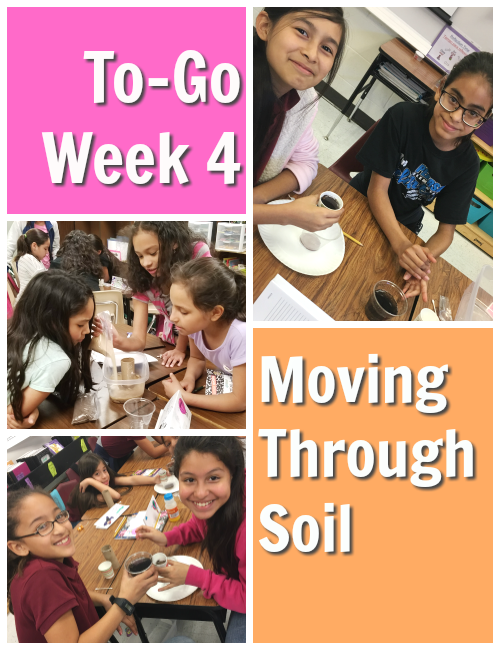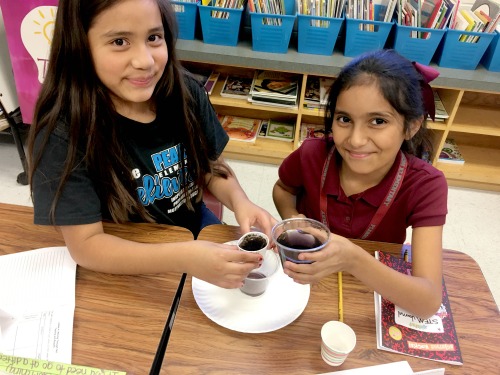River Pollution – Freddy the Fish
Last week, girls explored how pollution contaminates ground water. This week, they learned what effect this pollution has on organisms and how to reverse this as Environmental Engineers! The activity began with the girls brainstorming types of pollution on post-its and sharing their ideas on the board. Ideas ranged from usual pollution such as trash to more specific types such as feces, paint toxins and oil. The affect of these specific pollutants on aquatic animals was then discussed before hearing the story of “Freddy the Fish.”
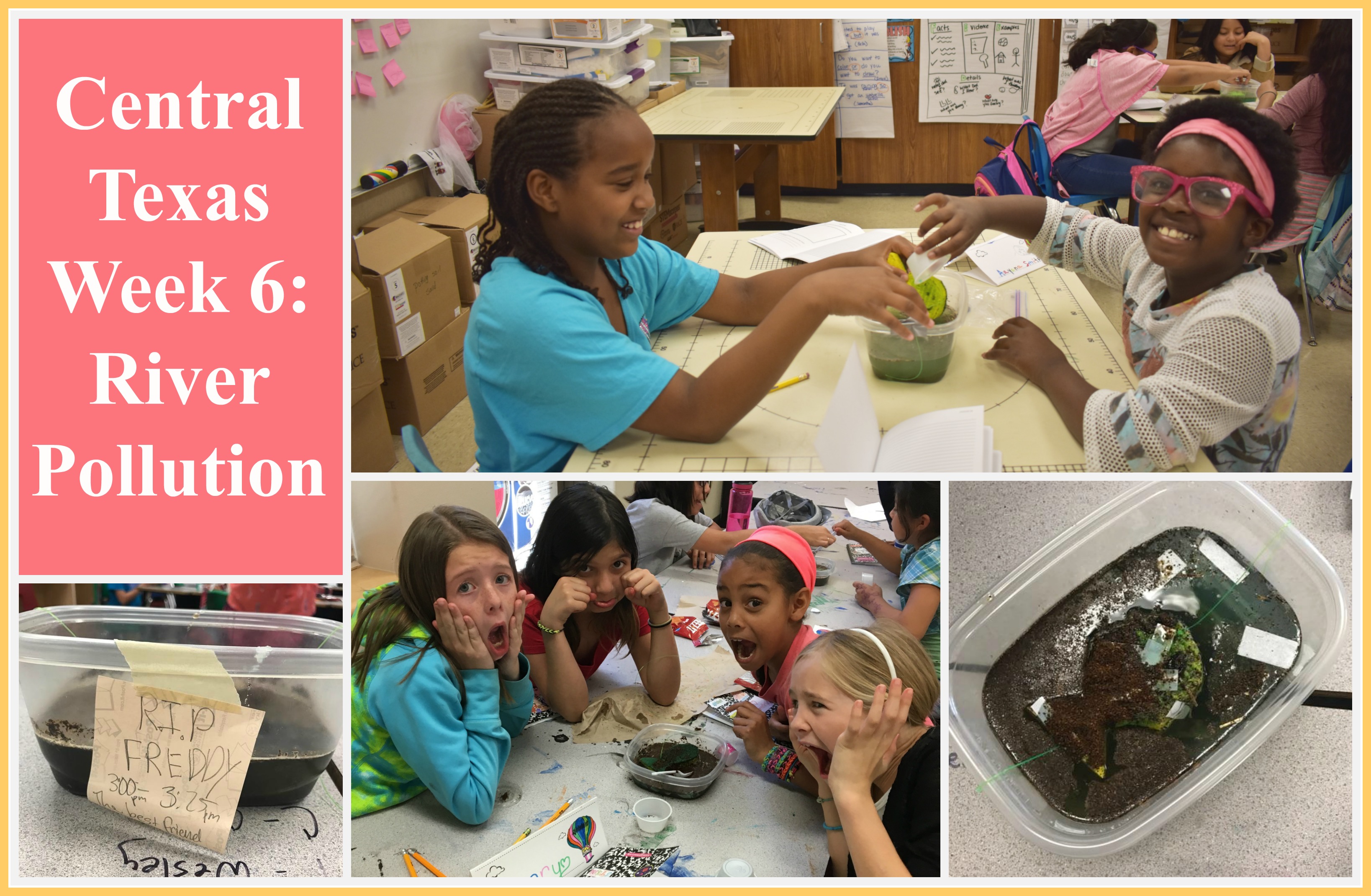
Groups were given a container of clean water with Freddy, a sponge fish, and various containers with different materials representing pollutants. As the club leaders told the story of Freddy’s journey up the river in which he encountered various pollutants, the girls would add the according material into the water. Once all eight pollutants were added, the girls were informed Freddy had died! While the pollutants were added, many of the girls laughed due to the fun of playing with Freddy and the water, but at the end, once informed that Freddy had died, screamed with discontent. Some girls wailed “Why Freddy why!” while others made post-it tombstones.
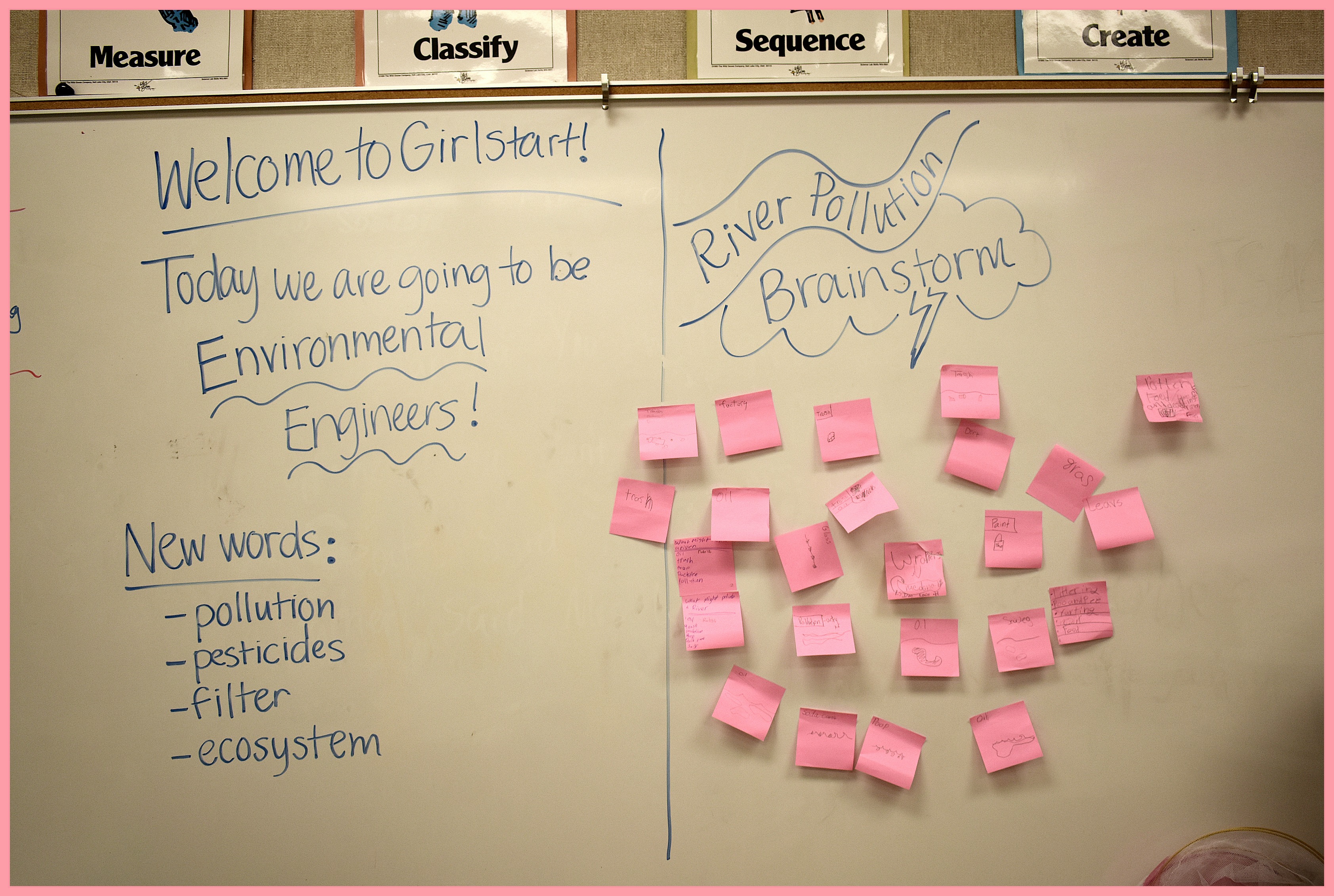
After the initial shock, the girls discussed solutions on how to clean up rivers. Some came up with extreme solutions such as shutting down all the factories and others said to use filters. To show how filters work, the leaders made a simple one through which the polluted water Freddy had died in was passed. The girls noticed that the large pollutants were removed yet the water remained dirty. Leaders emphasized the importance of keeping animals safe and how Environmental Engineers work to create new filters and materials in order to clean water. After the lesson the girls walked out proclaiming they were going to “grow up and help real Freddys!”


